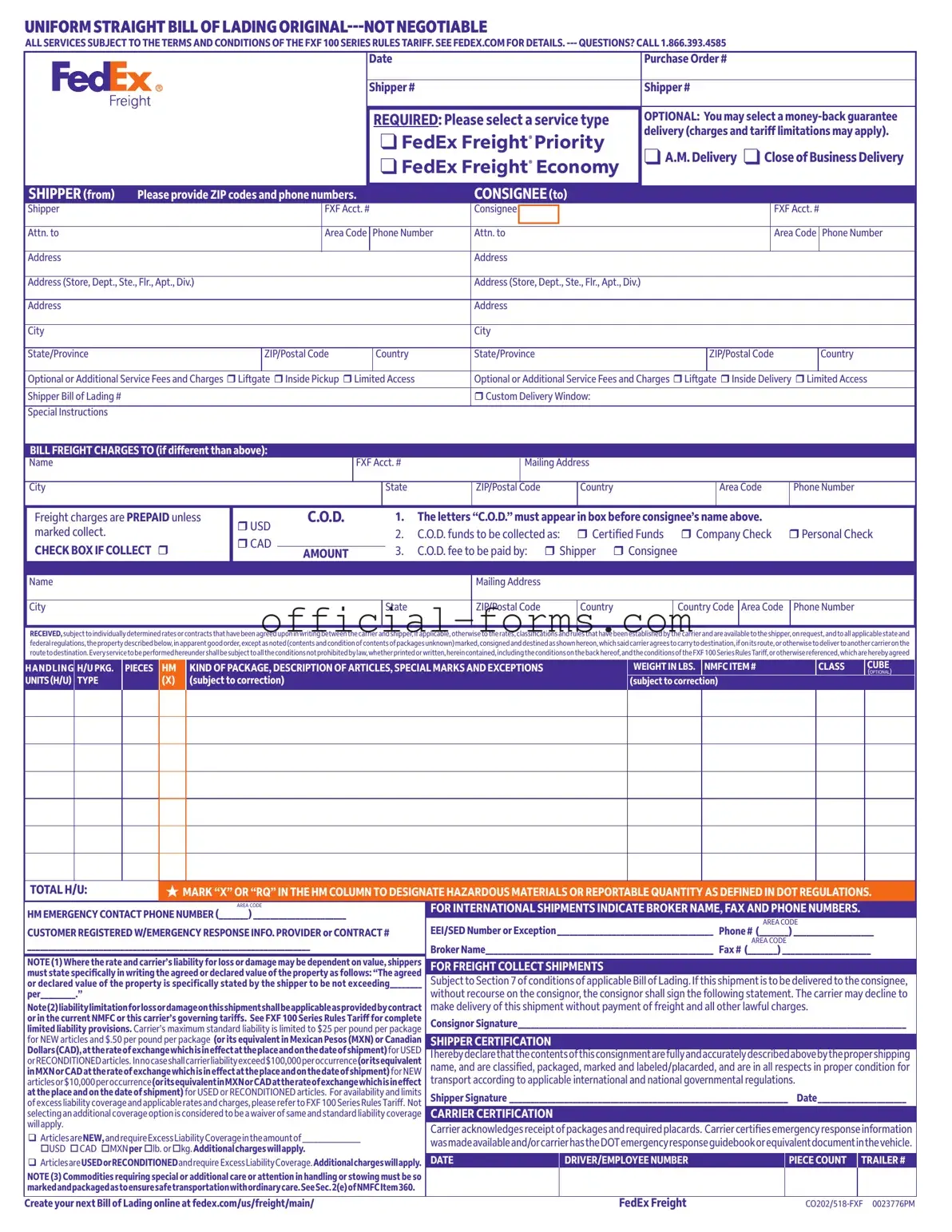Blank Fedex Bill Of Lading Form
The FedEx Bill of Lading form is a crucial document used in the shipping process, serving as a receipt for the goods being transported and a contract between the shipper and the carrier. It outlines essential information such as the sender and recipient details, service type, and any special instructions or charges. Understanding this form is key to ensuring a smooth shipping experience and compliance with all applicable regulations.
Open My Fedex Bill Of Lading Now
